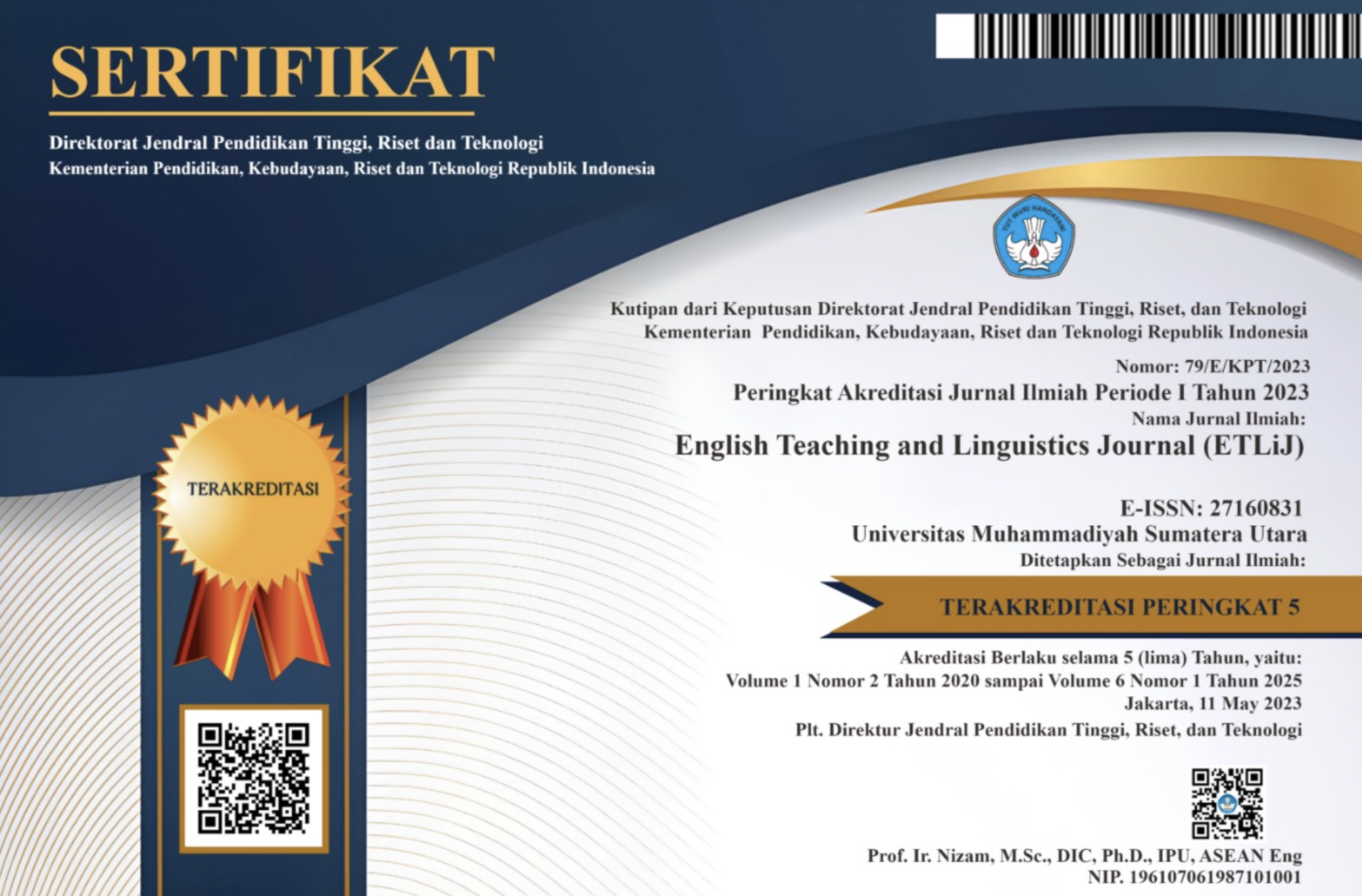Photovoice's Effect on Students' English Writing Ability
Abstract
Keywords
Full Text:
PDFReferences
Anwar, I. A. (2021). The Effect Of Using Videos and Photovoice on The Students’ Achievement in Writing Explanation Text.
Creswell, John W. (2012). Research Design Pendekatan Kualitatif,. Kuantitatif, dan Mixed. Yogyakarta: Pustaka Pelajar.
Derr, V., & Simons, J. (2020). A review of photovoice applications in environment, sustainability, and conservation contexts: is the method maintaining its emancipatory intents?. Environmental Education Research, 26(3), 359-380.
Ewald, W. (1985). Portraits and dreams: Photographs and stories by children of the Appalachians. New York, NY: Writers and Readers Publishing.
Fatmawati, I. I. (2019). Efektivitas Teknik Photovoice Terhadap Peningkatan Perilaku Prososial Siswa. Jurnal Riset Mahasiswa Bimbingan Dan Konseling, 5(1), 19-29.
Freire, P. (2007). Education for critical consciousness. (Rev. ed.). New York, NY: Continuum.
Graziano, K. J. (2011). Working with English Language Learners: Preservice Teachers and Photovoice. International Journal of Multicultural Education, 13(1).
Haffejee, F. (2021). The use of photovoice to transform health science students into critical thinkers. BMC Medical Education, 21, 1-10.
Hooks, B. (1981). Ain’t I a woman: Black women and feminism. Boston, MA: South End Press.
Hubbard, J. (1994). Shooting back from the reservation: A photographic view of life by Native American youth. New York, NY: The New Press.
Malka, M. (2022). Photo-voices from the classroom: Photovoice as a creative learning methodology in social work education. Social Work Education, 41(1), 4-20.
Marhaeni, A. A. I. N. (2008). Pengaruh Evaluasi-Diri Terhadap Kemampuan Menulis Bahasa Inggris. Bali: Universitas Pendidikan Ganesha.
Nisa, E. K. (2021). Photovoice Activities to Teach Writing for High School Students. Borneo Educational Journal (Borju), 3(1), 8-17.
Nurhadi, K., Istiqomah, L., & Gunawan, F. (2022). Adopting Photovoice to Explore EFL Student Teachers Online Thesis Examination Experiences: Lessons Learned from Indonesia. Mextesol Journal, 46(3), n3.
Puspawati, D. A. (2013). Pembelajaran Berbasis Media Photovoice: Belajar dari Potret Alam. In Proceeding Biology Education Conference: Biology, Science, Enviromental, and Learning (Vol. 10, No. 3, pp. 6-8).
Pralibroda, Beverly, et al. (2009). A Pratical Guide to Photovoice. Canada: Winnipeg, Manitoba.
Simka, W. (2019). A Comparative Study of Teaching Descriptive Writing Through Photovoice in An Indonesia EFL classroom: A Sociocultural Perspective (Doctoral dissertation, Universitas Siliwangi).
Smaldino, Sharon, James D. Russel, Robert Heinich, Michael Molenda. (2005). Instructional Technology and Media for Learning, Pearson Merrill Prentice Hall. Upper Saddle river. Ohio: New Jersey colomcus.
Wang, C., & Burris, M. A. (1994). Empowerment Through Photo Novella: Portraits of Participation. Health Education Quarterly, 21, 171-186.
Wang, C. C., & Burris, M. A. (1997). Photovoice: Concept, Methodology, and Use For Participatory Needs.
DOI: https://doi.org/10.30596/etlij.v5i1.17110
Refbacks
- There are currently no refbacks.

This work is licensed under a Creative Commons Attribution 3.0 License
ISSN: 2716-0831





